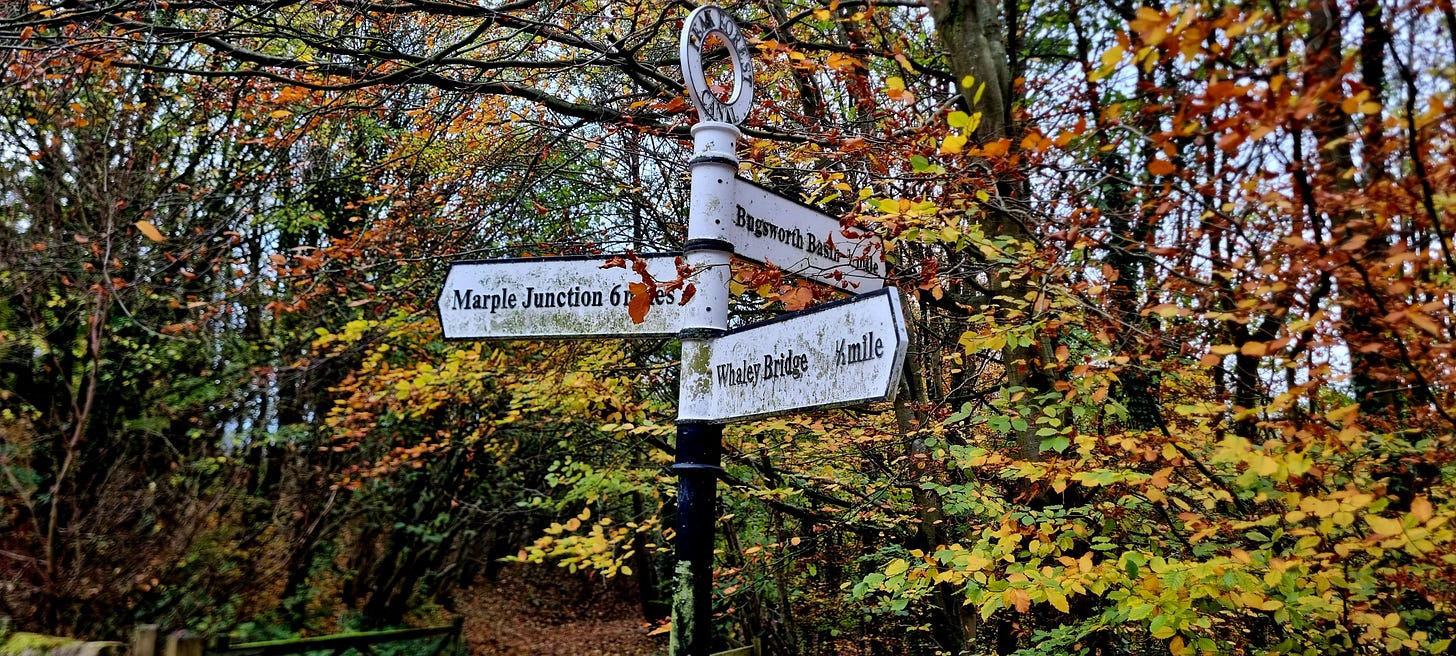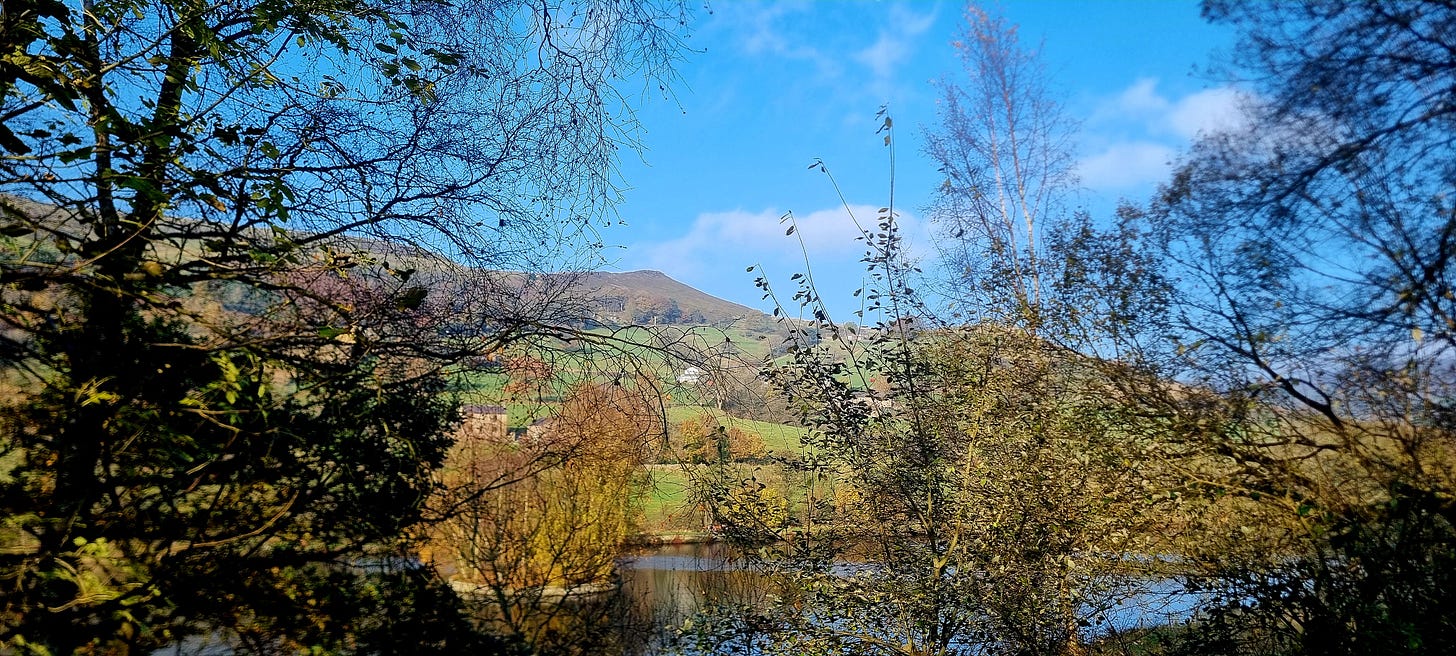Whaley Bridge to Hayfield 10k
New Mills is really underrated
We’ve had something like 10 days straight overcast, foggy or drizzly weather and we have a rule. It’s very simple: If we can’t see the top of a hill, we won’t walk up it, unless we have to.
There’s only two reasons to walk up a hill when you know you aren’t going to see anything: its on your route and your next bed is on the other side of it, or you want to get fit. For us fitness is someway down the list…
So we took the 61 High Peak service from the Market Place along Long Hill to Whaley Bridge about 8km north of here. In that 8km the weather can change dramatically and yesterday was no exception. We left the mist behind and found ourselves on the edge of clear air.
Our walk was along the towpath of the High Peak Canal to New Mills where we made our way down past Torvale Mill along the Millennium Walkway to the Tors park and on to the river Sett and the path along the Sett valley to Hayfield at the foot of Kinder Scout.
You can see the route on Relive here.
The High Peak Canal and High Peak Railway were built early on in the industrial revolution to link Manchester and the East Midlands. The Canal was very busy with local lime burners using the canal and rail way to get their product to these larger markets.
The transhipment warehouse at Whaley Bridge
The transhipment warehouse at Whaley Bridge is one of the earliest intermodal ports in the UK and possibly the world. Goods which came into the town by tramway were put onto canal boats for carriage towards Manchester and goods from Manchester went the other way towards the Derwent at Cromford, Derbyshire.
The canal has a separate basin at Buxworth called Bugsworth Basin, this was much more industrial and is well worth a visit.
A choice of routes
Walking along the canal towards the town of New Mills takes you along the Goyt Valley which is shared with the railway to Buxton, the mainline between Manchester and Sheffield and the A6 trunk road. Put like that it sounds very noisy, but the canal sits below the road and Buxton railway, the mainline is on the other side of the valley. Now used by pleasure craft, walkers and cyclists it is fairly quiet with good views of the higher hills in the Peak District.
After about 4km you reach New Mills. Now home to one of the UK’s largest sweet makers, New Mills gets its name from the Mills built in the 18 and 19 centuries in the Goyt valley which runs through a canyon in the town.
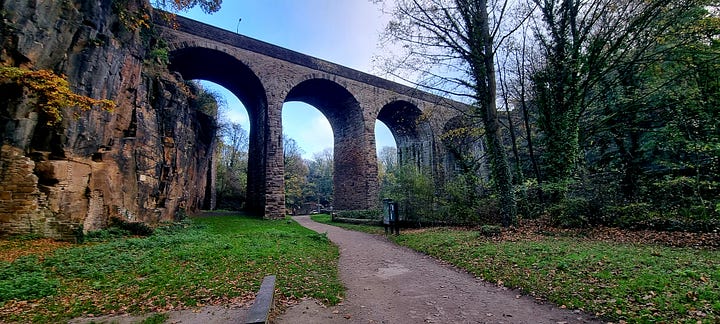
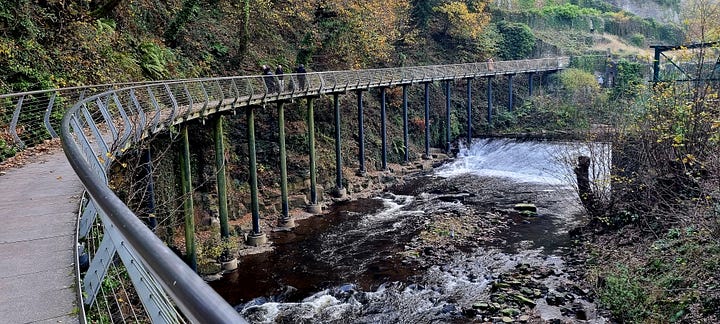
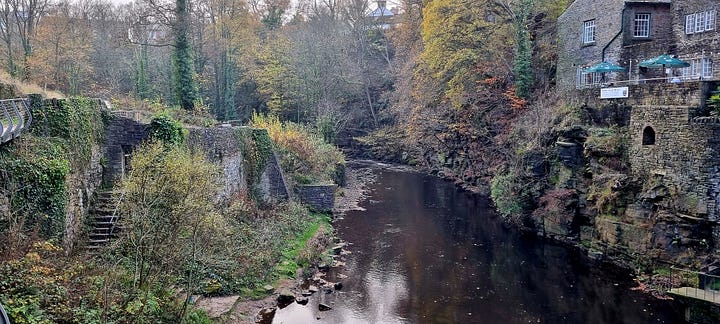
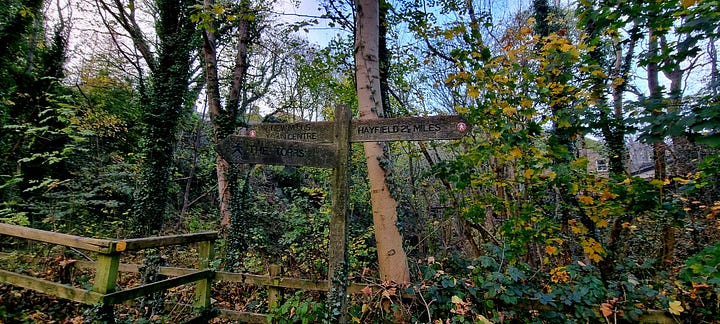
To reach this area, called the Torrs, you have to travel along the Millennium Walkway an inspired piece of architecture which sits alongside the embankment carrying the train into New Mills Central.
When you get to to the Archimedes screw power generator turn left and follow the Sett Valley trail.
This is on the bed of the disused railway which ran between New Mills and Hayfield.
Hayfield was another cotton spinning town and the railway runs past a small lake or lodge used to even out the water supply which powered mills built in the bottom of the valley. No one has made cotton there for many years and the railway is a pleasant walk to the little town. Hayfield is important in the history of the Peak District. It was the place a mass trespass onto Kinder Scout started from. That sparked the process which led to the UK’s National Parks.
Lantern Pike from the Sett Valley Trail
It is so much different to much of the 19 and early 20th Centuries where this was a working industrial landscape. Now the canal, mills and railway bed make an easy walk on days when the weather is too bad to climb up anything higher than the step of the bus.
We waited for a while in Hayfield before we caught the bus back home.



